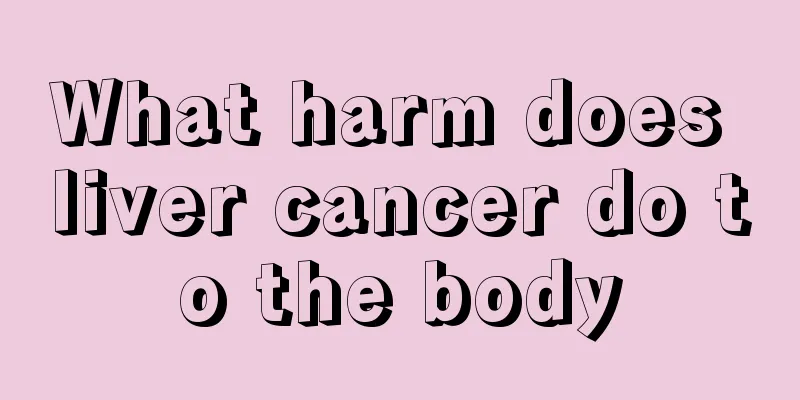What types of facial tumors are there

|
The facial structure is also very complex, and there are a large number of nerves distributed on the face, which play a very important role. As a disease, tumors can occur in any part of the human body, including the face, but the types of tumors that grow in each part are different. Today's article will explain the types of eye tumors in detail. The face consists of bone tissue and soft tissue, and the facial organs include the oral cavity, salivary glands, and temporomandibular joint. The following are common types of facial tumors: ① Odontogenic tumors. A tumor of the jaw that forms during tooth development. Benign ones include ameloblastoma, odontogenic adenoid tumor, calcifying odontogenic epithelioma, calcifying odontogenic cyst, true cementoma, odontogenic fibroma, odontogenic myxoma, compound odontoma, and combined odontoma. Malignant ones include ameloblast carcinoma, ameloblast fibrosarcoma, etc. ②Tumors of general tissue origin. Benign ones include papilloma, salivary gland mixed tumor, fibroma, lipoma, myxoma, chondroma, osteoma, fibroosteoma, hemangioma, lymphangioma, neurofibroma, neurotheca, etc.; malignant ones include squamous cell carcinoma, basal cell carcinoma, adenocarcinoma, adenoid cystic carcinoma, papillary cystadenocarcinoma, mucoepidermoid carcinoma, fibrosarcoma, osteosarcoma, malignant lymphoma, melanoma, neurofibrosarcoma, rhabdomyosarcoma, etc. The main treatments include surgery, chemotherapy, radiotherapy, immunotherapy and Chinese herbal medicine. ③Maxillofacial cyst. Odontogenic cysts include root cysts, dentigerous cysts, keratinizing cysts, etc.; dysplastic cysts include median cysts, nasopalatine cysts, globose maxillary cysts, nasolabial cysts, thyroglossal cysts, dermoid cysts, and branchial cleft cysts; retention cysts include sublingual gland cysts and mucous gland cysts. Jaw cysts are characterized by chronic bulging of the jaw, thinning and softening of the bone cortex, and a cystic feel. They are painless and can be secondarily infected. X-rays show bulging of the jaw, translucent areas with smooth borders, white lines, and changes in teeth. The main treatment is surgical removal of the cyst, but the source of the disease must also be treated. Tumors are divided into benign and malignant. Surgical resection is recommended, followed by pathological diagnosis. Appropriate treatment is taken based on the pathology. Benign tumors grow slowly and do not cause any discomfort, so no treatment is required. If it is a malignant tumor, it is best to combine Chinese and Western medicine for treatment. Western medicine's surgery, radiotherapy, and chemotherapy are effective quickly, but the patient suffers and is prone to relapse. Chinese medicine can make up for the shortcomings and deficiencies of Western medicine. |
<<: Is it normal to have a heart rate of over 50?
>>: Is there a way to stop vomiting by drinking?
Recommend
No crown after root canal treatment
When inflammation occurs in the tooth, the tooth ...
What are the symptoms of esophageal tumor
Esophageal tumors are divided into esophageal lei...
Methods with high cure rates for poorly differentiated colon cancer
What are the methods with high cure rates for poo...
I have been coughing for more than a month and it hasn't gotten better. Is it lung cancer?
If you have a cough for more than a month and it ...
Will eating cake at night make you fat
As we all know, cake is actually a high-calorie f...
What are the symptoms of common warts
Common warts are a benign tumor infected by a vir...
What are the nutritional benefits of okra
Okra is a food introduced to my country from fore...
Piriformis sciatic nerve
The piriformis muscle is an important muscle loca...
Why does my right clavicle hurt due to lung cancer?
If right lung cancer causes clavicle pain, it is ...
What are the symptoms of testicular cancer
With the continuous improvement of people's l...
Three common factors causing tongue cancer
The cause of tongue cancer is still unknown. Long...
Occupational diseases of welders
Few people are willing to do the job of welder in...
My face feels itchy after applying the mask
Nowadays, everyone loves beauty, and the pursuit ...
What is the reason for drooling in dreams? It turns out to be these
Many people dream when they sleep at night. The c...
What medicine is effective for viral cold and fever
Viral colds are relatively common in clinical pra...









